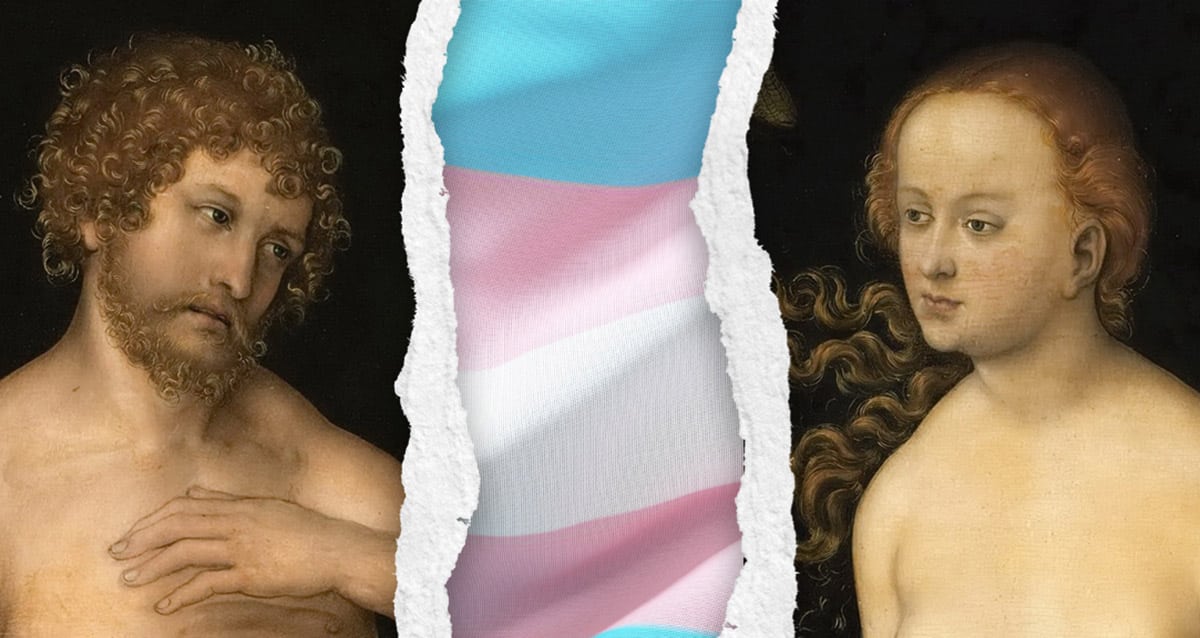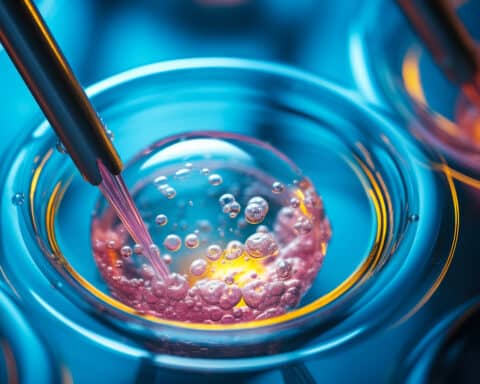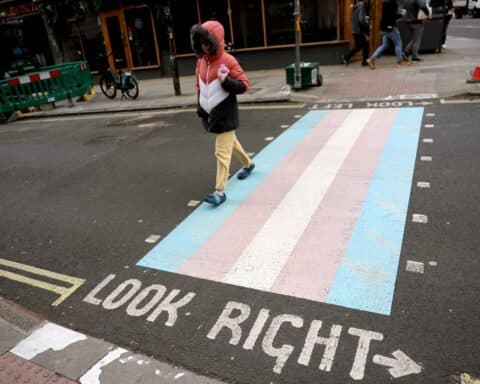In a growing national divide, 16 states have recently passed laws limiting or banning “gender transition” procedures, while three states — and counting — have declared themselves “trans sanctuaries.” Health care institutions — and public opinion — are starkly divided over the wisdom of “gender transition” procedures.
Despite the political and cultural confusion, the immorality of “gender transitioning” is strikingly clear. Pope Francis (Pope Benedict before him) and numerous Church documents warn about the false claims of gender ideology and its consequent harms.
In March 2023, the U.S. Conference of Catholic Bishops’ Committee on Doctrine issued a “Doctrinal Note on the Moral Limits to Technological Manipulation of The Human Body” explaining why “any technological intervention that does not accord with the fundamental order of the human person as a unity of body and soul, including the sexual difference inscribed in the body, ultimately does not help but, rather, harms the human person.” The backlash from secular media, LGBTQ advocates and progressive Catholics was immediate.
Missing from most critiques, however, is an examination of the nature of the human person (anthropology), implying that anthropology doesn’t matter. On the contrary, the Church has always understood that anthropology is crucial: A culture that doesn’t understand what it means to be a human person inevitably treats actual people in dehumanizing and harmful ways. Further, a culture that lacks grounding in the truth of the human person typically fails to support families, protect the vulnerable or promote human flourishing.
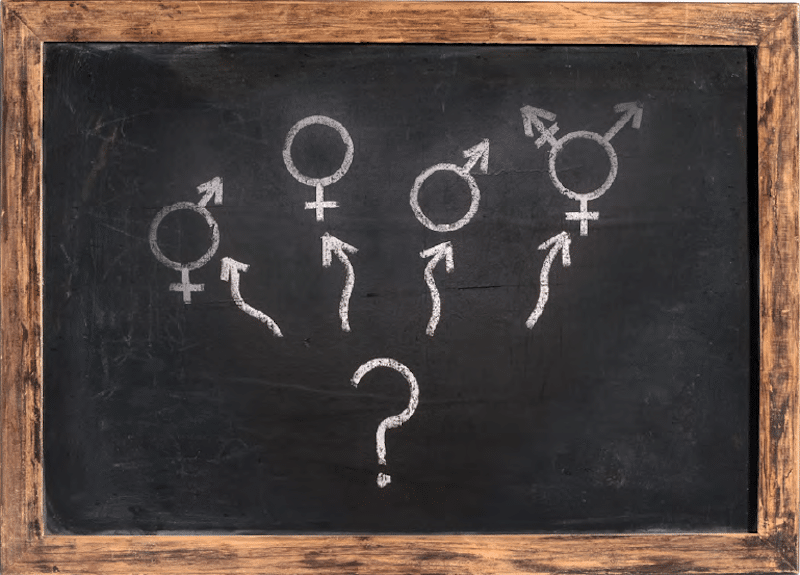
A look at human anthropology
To understand why the Church warns about gender ideology, it is critical to examine the deceptive anthropology underlying gender ideology. Perhaps the easiest way to understand the anthropological claims made by gender ideology is to look at the “gender-affirming” or “transgender” resources widely used in schools, universities and popular culture to explain “who we are.” Colorful cartoonish graphics like the genderbread person or the gender unicorn depict androgynous figures with labels proposing new categories of identity. Lesson plans designed by activist organizations teach students the vocabulary and core concepts of this new belief system that conflicts with Christian anthropology.
Rather than recognizing the truth that each person, created by God as male or female, is a unity of body and soul, gender ideology claims “the person” is a random assortment of dimensions: “gender identity” (self-perception, regardless of the body), “gender expression” (how you present yourself to others), “sex assigned at birth” (a guess about your identity made by doctors and parents), sexual attraction or emotional attraction (feelings and desires), and anatomical parts (body parts that can be replaced at will). Each of these categories is typically represented as a “spectrum” or as fluid and changeable.
In contrast, the Catholic Church teaches that the person is created at conception as a male or female person, with a unity of a human soul and either a male or female body.
These graphics encourage the child to decide his identity for himself, using these categories to shape his understanding of “who he is.” According to gender ideology, the defining or core aspect of identity of the person is “gender identity.” Human Rights Campaign’s Welcoming Schools “LGBTQ inclusivity” program, for example, describes “gender identity” as “who you know yourself to be in your heart and mind” and teaches children that “our bodies do not determine our gender identity.” This directly contradicts the truth, known by reason and revealed by God, that each of us is created with a unity of body and soul, embodied as male or female. The Catechism of the Catholic Church uses the term “sexual identity” to describe embodiment as male or female and teaches that “everyone must acknowledge and accept his [or her] sexual identity” (No. 2333).
Children are taught to believe that because identity is self-defined, there is an infinite array of gender identities. In Portland’s public schools, for example, social emotional learning lessons (SEL) instruct children that there are as many different “gender identities” as there are stars in the sky. Every person has a “gender identity,” and only the individual child can say what his or her identity is. The child who declares a transgender identity must be believed and affirmed and cannot be challenged. According to gender ideology, it is normal to be “transgender” (an umbrella term for a person whose “gender identity” does not align with his body), just as it is normal to be “cisgender” (a person whose “gender identity” matches his body). This undermines the child’s natural knowledge of human nature, that human beings are embodied as either male or female, and in its place substitutes a new “binary” premised on the belief that some persons are born in the wrong body. In contrast, the Catholic Church teaches that the person is created at conception as a male or female person, with a unity of a human soul and either a male or female body. In other words, God creates you, uniting your soul with your male or female body.

The narrative kids are taught
But how does a child discern his or her “gender identity”? The child is taught to compare his or her own behavior and feelings to exaggerated stereotypes of what it means to be male or female. Interests, feelings and preferences are presented as reliable indicators of “gender identity,” while the sexed body is not. Pediatricians are encouraged to ask about “gender identity” and refer children to gender clinics. Most adults assume that when a child experiences distress over his feelings that his identity does not align with his body (“transgender”) and is diagnosed with gender dysphoria, there is rigorous evidence supporting this diagnosis. But aside from the “distress” criteria of gender dysphoria, there is no objective test to support the “transgender” claim. “There’s no form, no scale, there’s no psychological battery of tests that needs to be done” to diagnose a child as “transgender,” admits Dr. Robert Garofalo, director of the Gender Development Program at Lurie Children’s Hospital in Chicago.
Children are encouraged to ponder their “gender identity” in school, online and even during visits to the pediatrician. Social media and children’s programming are awash with “gender identity” themes. No age is too young — 2-year-olds watching “Blues Clues” and children watching the Disney Channel are subjected to pro-LGBTQ programming. In schools, libraries and ebook platforms offer books filled with gender ideology. Some states require curricular materials to be pro-LGBTQ; social emotional learning and sex education classes are infused with transgender messaging.
Children understood that sex-segregated spaces were for their own protection and modesty; now they are told that some adults can violate the rules about sex specific spaces.
Children who don’t identify as “trans” still have to comply with gender ideology’s reordering of society. In schools, everyone is expected to affirm another child’s “gender identity” with chosen names, pronouns and bathroom use as the “trans”-identifying child desires. Girls quickly learn that their comfort, privacy and safety are less important than a “trans”-identifying biological male’s “gender identity” and his demand to have access to girls’ bathrooms or opportunities. Children are asked their pronouns or asked about their “sex assigned at birth.” The message is clear — every child potentially is “trans.”
Gender ideology’s account of the person undermines important truths about the person and family. Even young children know that an embodied male or female is a girl or boy; they can tell if a person is a boy or girl using their senses. Now they are taught they can’t trust their senses. Children know that mothers give birth to babies and understand the role of fathers in supporting, nurturing and protecting their children. Now they are told that men can get pregnant and that any combination (and, increasingly, any number) of persons can form a family. Children understood that sex-segregated spaces were for their own protection and modesty; now they are told that some adults can violate the rules about sex specific spaces.
This has disastrous effects on the family. Children know that their mothers and fathers love them, and they trust their guidance. Now children are told that their parents’ judgment about them should not be trusted — that parents may have been mistaken from birth about “who” the child really is. Driving home this point, schools hide transitions from parents whom they suspect might be unsupportive, allowing students to use the facilities of their choice, dress as the opposite sex and use desired names and pronouns, while sending communications to parents that still use the child’s “deadname” — the name a “trans” person no longer goes by after choosing name that affirms their “gender identity.” The state of Washington recently passed a bill authorizing shelters to harbor runaways who seek abortions or “gender transitions,” effectively allowing the state to hide runaway children who identify as “transgender” from their parents. California and other states are sanctuary states where parents involved in custody battles can seek to “transition” their child without the other parent’s consent.

The harm of ‘gender transition’
In rejecting the self-evident truth of the unity of body and soul and the person’s embodiment as male or female, the anthropology underlying gender ideology is profoundly irrational. It posits that self-perception and desire are constitutive of reality, even if that requires the body to be medically or surgically modified with treatments that destroy the natural order and function of the body. The child is encouraged to think of “gender identity” as deeply meaningful, even though it merely is self-perception. Regardless of the accuracy of that self-perception, the “transgender”-identifying child is told he must “transition” or he will commit suicide.
No aspect of “transition” is benign; each stage is a pathway to increasingly more destructive interventions. “Social transition,” affirmation of the “gender identity” by desired pronouns, names and inclusion according to desired identity, is a powerful psychosocial intervention that leads to 98% of social “transitioned” kids continuing to “medical transition.” (Without “social transition,” most “trans”-identifying children eventually accept their sexual identity.) Children on puberty blockers are overwhelmingly likely to continue to cross-sex hormones, while many teens on cross-sex hormones seek surgical “transition” (double mastectomy, hysterectomy or castration, creation of a neo-vagina or neo-phallus).
No aspect of “transition” is benign; each stage is a pathway to increasingly more destructive interventions.
The language used to portray “gender transition” is not just deceptive but dangerous, as it encourages vulnerable and distressed children to believe that they really can change their biological sex. Instead, physically healthy young persons are put through experimental treatments that sacrifice physical integrity and even future fertility for the sake of creating an appearance that aligns with the person’s self-perception. Puberty blockers are used to freeze the child’s sexual maturation, despite concerns about the association of puberty blockers with early onset osteoporosis and about the developmental effects of pausing puberty in healthy bodies. The transitioning teenager’s body is flooded with doses of cross-sex hormones, with girls receiving testosterone and boys receiving estrogen, in order to force the development of secondary sex characteristics of the opposite sex. This combination of medications affects sexual functioning and destroys fertility, as even “gender-affirming” physicians admit.
| Respecting our God-given nature |
|---|
|
“What is true of creation as a whole is true of human nature in particular: there is an order in human nature that we are called to respect. In fact, human nature deserves utmost respect since humanity occupies a singular place in the created order, being created in the image of God (Gn 1:27). To find fulfillment as human persons, to find true happiness, we must respect that order. We did not create human nature; it is a gift from a loving Creator. Nor do we ‘own’ our human nature, as if it were something that we are free to make use of in any way we please. Thus, genuine respect for human dignity requires that decisions about the use of technology be guided by genuine respect for this created order.” — “Doctrinal Note on the Moral Limits to Technological Manipulation of the Human Body,” March 20, 2023 |
The evidence for these treatments is weak and low quality. One study that claimed to show that these treatments lowered suicide risk and mental health utilization was quietly retracted the following year, while a study of “trans”-identifying children in the military health care system found that the need for psychotropic medications increased after beginning “gender-affirming medical care.” Studies show ongoing risk for suicide, which is not resolved by “gender-affirming care.” The ongoing public struggles of “trans” celebrities such as Jazz Jennings painfully illustrate that the attempt to rewrite the reality of the body does not solve problems but creates new ones.
The good of our young people is at stake
Gender ideology is not only at odds with what reason tells us about the person but undermines Christian anthropology’s beautiful teachings about the meaning and beauty of the human body, about the importance of sexual difference and the nature of marriage and family. In contrast to the Theology of the Body, it asserts that each person gets to choose the meaning of his or her body. It rejects the Christian teaching that God creates you, as a unity of body and soul, male or female from the moment of conception, instead insisting that your identity is separate from your body and that someone could be born in the wrong body. Christian anthropology views the complementarity of men and women as mutually enriching, as helping us to discover our humanity by seeing ourselves in relation to the other, and teaches that sexual difference is ordered to the good of the family. In contrast, gender ideology denies sexual difference by viewing gender and even sex as social constructs and consequently redefines the family and relationships. As a result, it undermines and even destroys the natural rights of parents to oversee the upbringing and moral formation of their children.
In the place of a loving God who creates each human as male or female, gender ideology insinuates that if there is a God, he makes mistakes.
Gender ideology intentionally undermines Christian families who seek to instill religious convictions in their children. In the place of a loving God who creates each human as male or female, gender ideology insinuates that if there is a God, he makes mistakes. It encourages the child to question and even reject God the Creator’s loving plan for his or her life, to believe his or her task is to create his own identity. It calls into question Church teaching on marriage and family, and in its place substitutes a vision of sex without procreation, marriage without sexual difference, and chosen or “glitter” families.
For Christian Churches concerned with evangelization, the effects of gender ideology on catechesis are disastrous. Young Catholics, steeped in gender ideology at school and in the digital world, believe that Church teachings about human sexuality are bigoted and oppressive. Even those who remain in the Church absorb assumptions from the culture that undermine their faith. For instance, believing that the person is separate from the body undermines belief in key teachings that rely on the unity of the person, such as the incarnation of Jesus Christ as true God and true man.
| Wisdom from Pope Francis |
|---|
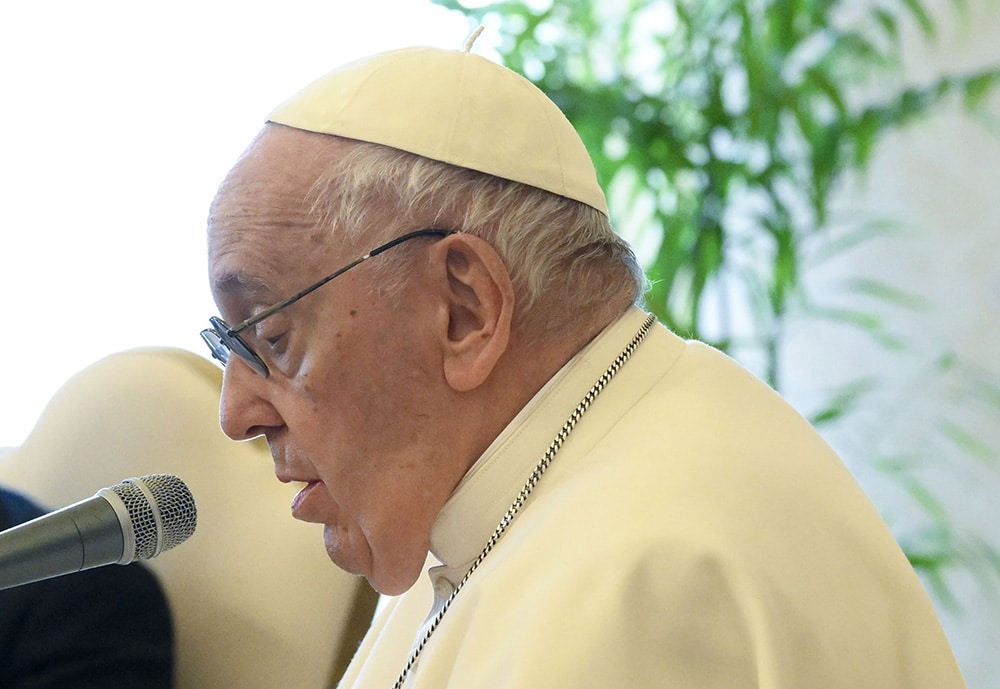 “It needs to be emphasized that ‘biological sex and the socio-cultural role of sex (gender) can be distinguished but not separated.’ … It is one thing to be understanding of human weakness and the complexities of life, and another to accept ideologies that attempt to sunder what are inseparable aspects of reality. Let us not fall into the sin of trying to replace the Creator. We are creatures, and not omnipotent. Creation is prior to us and must be received as a gift. At the same time, we are called to protect our humanity, and this means, in the first place, accepting it and respecting it as it was created.” — Pope Francis, Amoris Laetitia, No. 56 |
Finally, gender ideology is most harmful for the persons it claims to help. As the bishops note, these are children and young adults with healthy bodies who have “no disorder in the body that needs to be addressed.” The medical and surgical interventions of “gender-affirming care” destroy healthy bodies in futile pursuit of the illusion that it is possible to change one’s sex by destroying innate secondary sex characteristics of the body and attempting to medically or surgically change the body to look like the opposite sex. These interventions are attempting to destroy the person’s natural embodiment as male or female in order to bring the body into subjection to the person’s desires. As the bishops note, rather than removing or reconfiguring body parts to address a serious threat to the health of the body, “the removal or reconfiguring is itself the desired result.” The bishops soberly conclude that Catholics who work in health related fields should not participate in “gender affirming care.” They are not alone in their concern — countries like the U.K., Norway and Finland have realized the destructive nature of these treatments, especially for children and young adults, and are restricting or discontinuing “gender affirming care.”
The USCCB doctrine committee reminds us that “the search for solutions to problems of human suffering must continue, but it should be directed toward solutions that truly promote the flourishing of the human person in his or her bodily integrity.” Pope Francis cautions us that young people need to be helped “to accept their own bodies” as created. Compassionate care for the person must be grounded in the truth about the person. Anything less falls short of true compassion and true care.

